Panama
Owls

Birding Tour in Panama Canal
Central
Photos
by Dan Lockshaw & GH
Go Back
Owls in Panama | Owling
Tours | Panama Owls
Central Panama Owling Tour. Guided owling tour in Panama by
local birdguide. And birdwatching tours guiding birders to all
the birding hotspot areas in Panama, Panama.
Panama Owling Owling Tours Panama Owls Owls in Panama guided
owling tour local birdguides Panama Birding Guided Trip hire
local bird guide birding Panama Canal trip guided birdwatching
tour guiding birders local birding guide guided panama birding
trip hire a Panama bird guide guiding birding tours in Panama
Panama bird list
Please understand that this page is on the making. Thank
You for Your patience.
This
unique type of birding has special considerations for success.
Understanding the basics of owling can help you find owls with
great views.the best time of
day to see owls is at dawn or dusk when they are more easily
spotted
and more active. A moonlit night can also be a great time for
owling,
when the moon provides more light for effective owl spotting.
but certain times of year are better for owling and birding by
ear is best for spottin owls.....owling hike, it is important to
be mentally
and physically prepared. To get ready to go owling…Dress
appropriately for the local weather, Darker colors and dark
camouflage are the best options for what to wear out
owling.flashlight, insect repellant and warm drinks
All the preparation in the world cannot help you find owls if
you
don't know where to look for them. These raptors have large
ranges
but can be very loyal to productive hunting grounds, and if you
know
where owls have been seen recently you will have a better chance
of
finding them yourself. Check online message lists, sightings
reports
or contact a local birding organization for tips on where to
find
owls. If there are no recent sightings, opt for wooded habitats
and
riparian zones or forest edges near agricultural areas that will
support plenty of mice, voles and other prey for owls. Be sure
to
always respect the boundaries of private property, however, and
obey
all posted signs for closed preserves or parks.....to avoid
stress and distract the birds, we'll keep recordings to a
minimum....
Facts About Owls
By Melissa Mayntz
1.There are more
than 150 species of owls in the world, and some
counts indicate more than 220 species depending on how different
owls
are classified. Only 19 owl species are found in North America.
2.Owls are found in all different habitats and there are
different
owl species found on all continents except Antarctica.
3.All owls have upright posture and forward-facing eyes that
give
them binocular vision, just like humans.
4.Many owl species have asymmetrical ears that are different
sizes and different heights on their heads. This gives the birds
superior hearing and the ability to pinpoint where prey is
located, even if they can't see it.
5.Several owls species have "ear" tufts on their heads but they
aren't ears at all. These tufts of feathers may indicate the
bird's
mood, help keep it camouflaged or be used to show aggression.
6.The flattened facial disk of an owl funnels sound to the
bird's
ears and magnifies it as much as ten times to help the bird hear
noises humans can't detect.
7.An owl's eyes are supported by bony eye sockets and they
cannot turn their eyes. Instead, owls rotate their heads up to
270 degrees, but they cannot turn their heads all the way
around.
8.An owl has three eyelids: one for blinking, one for sleeping
and
one for keeping the eye clean and healthy.
9.A barn owl can eat up to 1,000 mice each year, and many
farmers try to attract barn owls to help control rodent
populations in agricultural fields.
10.Owls are carnivorous and will eat rodents, small or medium
sized mammals, nocturnal insects, fish and other birds. After
digesting their food, owls regurgitate hard pellets of
compressed bones, fur, teeth, feathers and other materials they
couldn't digest. Ornithologists study those pellets to learn
more about an owl's diet.
11.Owls have zygodactyl feet with two toes pointing forward and
two toes pointing backward. This gives the birds a stronger,
more powerful grip so they can be more effective predators.
12.Owls have specialized feathers with fringes of varying
softness the help muffle sound when they fly. Their broad wings
and light bodies also make them nearly silent fliers, which
helps them stalk prey more easily.
13.For most owl species, females are larger, heavier and more
aggressive than males. If the birds are dimorphic, the female is
often more richly colored than the male.
14.Not all owls hoot, and owls can make a wide range of other
sounds, such as screeches, whistles, barks and hisses. During
the nesting season, owl calls can often be heard up to a mile
away.
15.Not all owl species are nocturnal. How often an owl is seen
during the day depends on the seasonal amount of daylight and
darkness, food supplies and habitat.
16.Most owls do not migrate but they can be nomadic in searching
for the best food sources. Some species, such as the snowy owl,
have regular irruptions.
17.A group of owls is called a parliament, wisdom or study. Baby
owls are called owlets.
18.Owls have been found in the fossil record up to 58 million
years ago. The largest recorded owl fossil, Orinmegalonyx oteroi,
stood about three feet tall.
19.Owls have long been cultural symbols and they have been found
in cave paintings in France, in Egyptian hieroglyphics and even
in Mayan art. Today, owl superstitions associate the birds with
bad luck, death and stealing souls in many cultures.
20.The biggest modern threats to owls are habitat loss,
pesticides that poison the birds and their food supplies and
human persecution because of negative superstitions.
Go Back
Photos by Dan Lockshaw &
GH
|
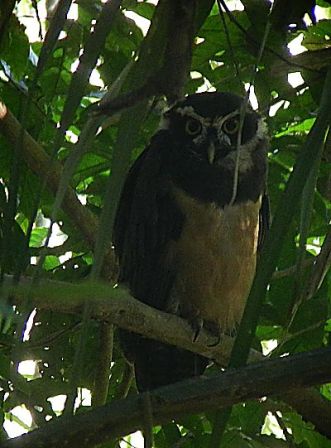
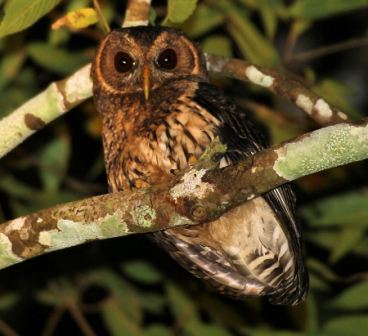
%20Screech-Owl%20by%20Dan%20Lockshaw.JPG)
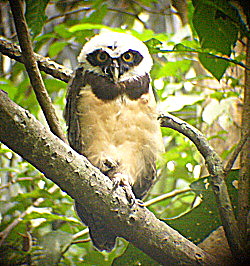
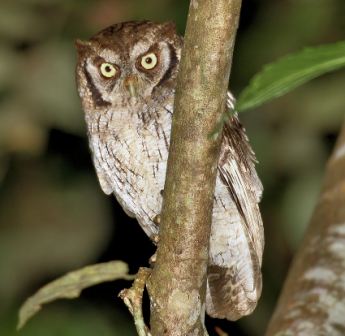
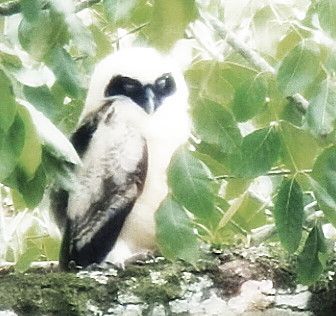
OWL
GALLERY
LINKS
The Owl Pages
|



